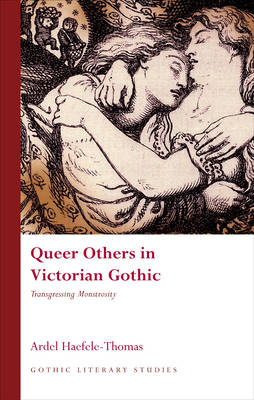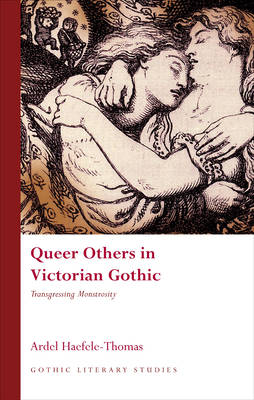
Door een staking bij bpost kan je online bestelling op dit moment iets langer onderweg zijn dan voorzien. Dringend iets nodig? Onze winkels ontvangen jou met open armen!
- Afhalen na 1 uur in een winkel met voorraad
- Gratis thuislevering in België vanaf € 30
- Ruim aanbod met 7 miljoen producten
Door een staking bij bpost kan je online bestelling op dit moment iets langer onderweg zijn dan voorzien. Dringend iets nodig? Onze winkels ontvangen jou met open armen!
- Afhalen na 1 uur in een winkel met voorraad
- Gratis thuislevering in België vanaf € 30
- Ruim aanbod met 7 miljoen producten
Zoeken
€ 27,95
+ 55 punten
Uitvoering
Omschrijving
In Queer Others in Victorian Gothic, Ardel Haefele-Thomas examines a number of nineteenth- and twentieth-century Gothic novels, short stories, and films through the lens of queer cultural studies. In some of these works, as Haefele-Thomas demonstrates, the author or filmmaker fully intended to explore the complicated landscape of queer sexuality and gender identity. In most, however, the author or filmmaker's intentions are unclear. Haefele-Thomas takes on these works, first employing "queer" in its nineteenth-century historical context, to point to their generally weird, odd, or ill components. She then explores them using "queer" in the complex and politically charged context from the late twentieth and early twenty-first centuries. Haefele-Thomas argues that part of what makes these texts Gothic are their covert queer content. She also reveals that queer theory--lacking the gender specificity found in gay and lesbian theories and historiographies--allows room to convey gender, sexuality, race, class, and familial structures in a specific state of anti-categorization. Queers Others in Victorian Gothic will appeal to anyone interested in the intersection of gender, sexuality, and literary criticism.
Specificaties
Betrokkenen
- Auteur(s):
- Uitgeverij:
Inhoud
- Aantal bladzijden:
- 195
- Taal:
- Engels
- Reeks:
Eigenschappen
- Productcode (EAN):
- 9780708324646
- Verschijningsdatum:
- 15/05/2012
- Uitvoering:
- Hardcover
- Formaat:
- Genaaid
- Afmetingen:
- 140 mm x 216 mm
- Gewicht:
- 378 g

Alleen bij Standaard Boekhandel
+ 55 punten op je klantenkaart van Standaard Boekhandel
Beoordelingen
We publiceren alleen reviews die voldoen aan de voorwaarden voor reviews. Bekijk onze voorwaarden voor reviews.











